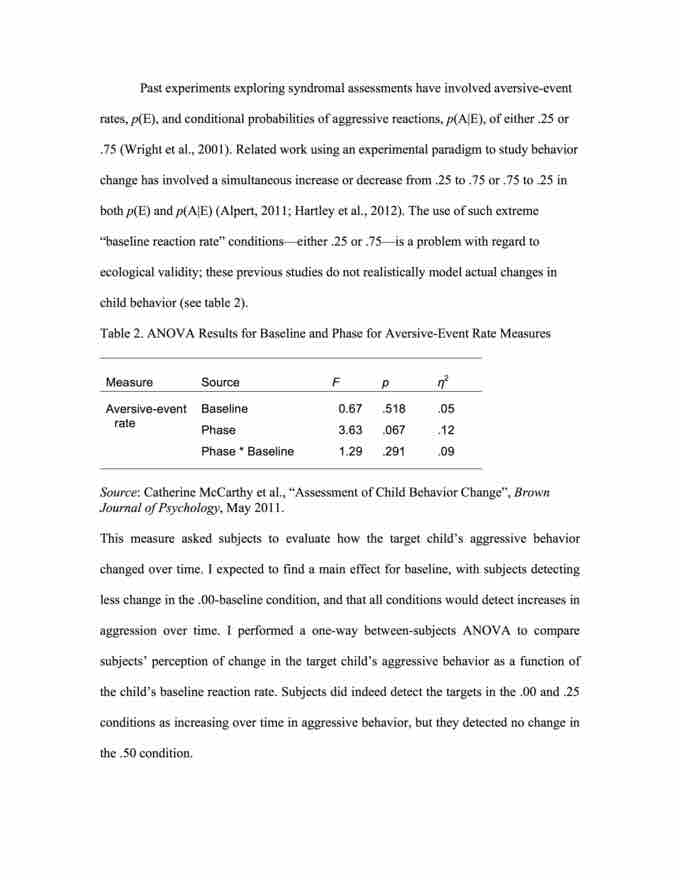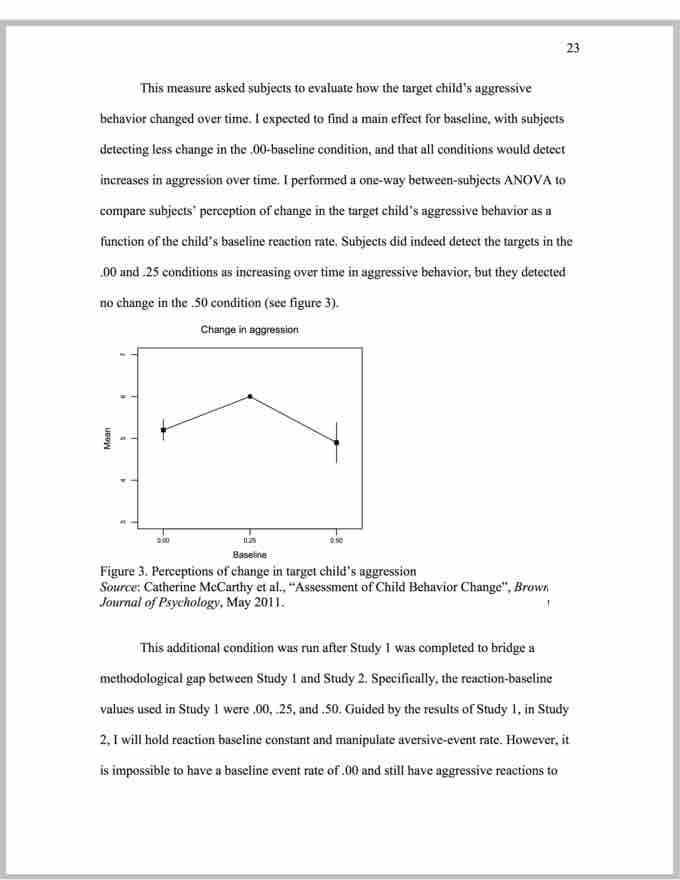When you need to summarize quantitative data, words can only go so far. Sometimes, using a chart, graph, or other visual representation can be useful in proving your point. However, it's important to make sure you incorporate this extra information in a way that is easy to understand and in line with the conventions set forth in Chicago/Turabian style.
Chicago/Turabian specifies two methods for representing information visually: tables and figures.
Tables
A table is a chart that presents numerical information in a grid format. In Chicago/Turabian style, you must present a table immediately following the paragraph in which you mentioned it. When you mention a table in the text of your paper, make sure you refer to it by its number (e.g., "Table 1") rather than with a phrase like "the table below" or "this table."
Formatting
Format your tables as simply as possible. Do not use bold or italicized text, and do not overuse borders. Generally, you should have only three horizontal lines in your table: one immediately above and one immediately below the column headings, and one at the bottom of the table, to help separate it from the surrounding text. However, Chicago style does allow two exceptions: you may use an additional horizontal line if (1) you need to separate added numbers from their total, or (2) if you have multiple levels of column headings within a table.
Title and Source
Every table should appear flush with the left margin. Immediately above the table, provide its number, followed by a colon, followed by a short but descriptive title:
- Table 1: Frog populations in the Willamette River from 2009-2014
Immediately below the table, write the word "Source" (or or "Sources") in italics, followed by a colon, and then provide the source(s) of the information in the table. Include the same information, with the same formatting, as in a parenthetical citation—i.e., the author's last name and the page number. End this line with a period:
- Source: Rottweiler 67.
Be sure to also include the full citation for this source in your References or Bibliography section. Neither the title nor the source line should be double-spaced.

Sample table
This table is formatted correctly according to Chicago/Turabian formatting rules.
Figures
Treat a figure much as you would treat a table, with two exceptions: (1) you should present a figure immediately after you have referenced it in the text, and (2) all information about the figure, including its number ("Figure 1") and title ("Frogs in the Willamette River, 2012") should appear on the line immediately below the figure. The source information should appear on the next line.

Sample figure
This figure is formatted correctly according to Chicago/Turabian formatting rules.